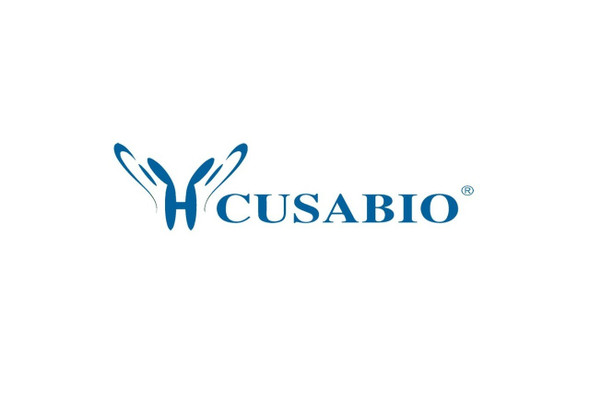Cusabio Human Recombinants
Recombinant Human Eukaryotic translation initiation factor 3 subunit M (EIF3M) | CSB-EP745333HU
- SKU:
- CSB-EP745333HU
- Availability:
- 3 - 7 Working Days
Description
Recombinant Human Eukaryotic translation initiation factor 3 subunit M (EIF3M) | CSB-EP745333HU | Cusabio
Alternative Name(s): Short name: eIF3m Alternative name(s): Fetal lung protein B5 Short name: hFL-B5 PCI domain-containing protein 1
Gene Names: EIF3M
Research Areas: Others
Organism: Homo sapiens (Human)
AA Sequence: SVPAFIDISEEDQAAELRAYLKSKGAEISEENSEGGLHVDLAQIIEACDVCLKEDDKDVESVMNSVVSLLLILEPDKQEALIESLCEKLVKFREGERPSLRLQLLSNLFHGMDKNTPVRYTVYCSLIKVAASCGAIQYIPTELDQVRKWISDWNLTTEKKHTLLRLLYEALVDCKKSDAASKVMVELLGSYTEDNASQARVDAHRCIVRALKDPNAFLFDHLLTLKPVKFLEGELIHDLLTIFVSAKLASYVKFYQNNKDFIDSLGLLHEQNMAKMRLLTFMGMAVENKEISFDTMQQELQIGADDVEAFVIDAVRTKMVYCKIDQTQRKVVVSHSTHRTFGKQQWQQLYDTLNAWKQNLNKVKNSLLSLSDT
Source: E.coli
Tag Info: N-terminal 6xHis-SUMO-tagged
Expression Region: 2-374aa
Sequence Info: Full Length of Mature Protein
MW: 58.4 kDa
Purity: Greater than 90% as determined by SDS-PAGE.
Relevance: Component of the eukaryotic translation initiation factor 3 (eIF-3) complex, which is required for several steps in the initiation of protein synthesis. The eIF-3 complex associates with the 40S ribosome and facilitates the recruitment of eIF-1, eIF-1A, eIF-2:GTP:methionyl-tRNAi and eIF-5 to form the 43S preinitiation complex (43S PIC). The eIF-3 complex stimulates mRNA recruitment to the 43S PIC and scanning of the mRNA for AUG recognition. The eIF-3 complex is also required for disassembly and recycling of post-termination ribosomal complexes and subsequently prevents premature joining of the 40S and 60S ribosomal subunits prior to initiation. May favor virus entry in case of infection with herpes simplex virus 1 (HSV1) or herpes simplex virus 2 (HSV2).
Reference: "A new class of receptor for herpes simplex virus has heptad repeat motifs that are common to membrane fusion proteins."Perez A., Li Q.-X., Perez-Romero P., DeLassus G., Lopez S.R., Sutter S., McLaren N., Fuller A.O.J. Virol. 79:7419-7430(2005).
Storage: The shelf life is related to many factors, storage state, buffer ingredients, storage temperature and the stability of the protein itself. Generally, the shelf life of liquid form is 6 months at -20?/-80?. The shelf life of lyophilized form is 12 months at -20?/-80?.
Notes: Repeated freezing and thawing is not recommended. Store working aliquots at 4? for up to one week.
Function: Component of the eukaryotic translation initiation factor 3 (eIF-3) complex, which is required for several steps in the initiation of protein synthesis
Involvement in disease:
Subcellular Location: Cytoplasm
Protein Families: EIF-3 subunit M family
Tissue Specificity: Broadly expressed.
Paythway:
Form: Liquid or Lyophilized powder
Buffer: If the delivery form is liquid, the default storage buffer is Tris/PBS-based buffer, 5%-50% glycerol. If the delivery form is lyophilized powder, the buffer before lyophilization is Tris/PBS-based buffer, 6% Trehalose, pH 8.0.
Reconstitution: We recommend that this vial be briefly centrifuged prior to opening to bring the contents to the bottom. Please reconstitute protein in deionized sterile water to a concentration of 0.1-1.0 mg/mL.We recommend to add 5-50% of glycerol (final concentration) and aliquot for long-term storage at -20?/-80?. Our default final concentration of glycerol is 50%. Customers could use it as reference.
Uniprot ID: Q7L2H7
HGNC Database Link: HGNC
UniGene Database Link: UniGene
KEGG Database Link: KEGG
STRING Database Link: STRING
OMIM Database Link: OMIM










